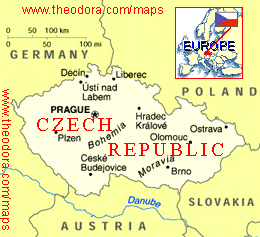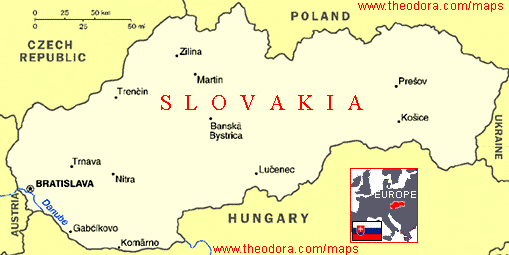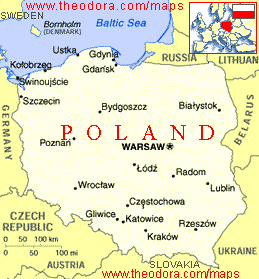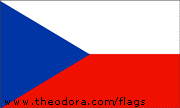
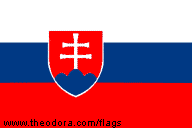

Checking Out The Czech Republic, Slovakia, Poland & Berlin
Easter 1993
Sunday 9th April - England - Czech border
Arriving at the Hook of Holland, we disembarked the ferry around 7.30 and headed for Rotterdam, Eindhoven and crossed in Germany as dusk fell. I roared on along the autobahns left behind by unbelivable German driving speeds, past Frankfurt and then Nurmberg on route 5. I turned north to Bamberg, and east to Beyruth and by 3.30am I was exhausted. As we entered forests and it began to snow, I decided to hole up in a layby for a couple of hours sleep.
Monday April 10th - Kerlovy Vary, Prague
I awoke at 5.30 freezing. The car was under a blanket of snow. We crossed over the Czech Republic border crossing around 6am. There was a long line of trucks waiting to get out into Germany, but nothing going in. We were the only car at the border. We made for Karlovy Vary, the undisputed king of the famous triangle of Bohemian spas. What make its so special is its wonderful hilly setting - Belle Epopue mansions pile on top of one another along the steep wooded banks of the endlessly twisting River Tepla. It is really know as Karlsbad. We explored the slumbering town, trying out some of the Spa waters, looking at the hugh Pupp Hotel and looking for somewhere to change money and eat. It was still snowing which curtailed any hillwalking, but a lovely place to start the touring.
We changed money, and decided to roll on to Prague via some walled towns along the River Ohre. Kadan had very little of its walls left, a dusty neglect about its eighteenth century buildings, and a prickly white cone of a watchtower. Entering Prague in the early afternoon, we knew it would be expensive and sort out a hotel in the Rough Guide on the west side. Without a map, it took nearly two hours to find it. We found a sign for it, but could not find the hotel. Asking many locals proved fruitless until someone pointed out you had to get to 'Hotel U Blazensky' from the top of the hill and not the bottom. It had been done up by a Swiss company and the price had shot up to £60. The most expensive hotel I have ever stayed in, but it was very comfortable and had a lovely location. We had only seen one other hotel and we were conscious of leaving our car in bad areas. The rain poured down, but we caught the Andel metro four stops (12p) to Wenceslas Square for a beer and hot dogs (20p). It was the main shopping area and full of tourists. Retired early after being on the move for 36 hours.
Tuesday April 11th - Prague
RG "Prague is one of the least Eastern European cities you could imagine. Architecturally, and in terms of city sights, it is a revelation. Few other cities in Europe look so good or can present six hundred years of architecture so completely untouched by natural disaster or war. Its town planning took place in medieval times, its palaces and churches were decorated with a rich mantle of Baroque, and the whole lot has escaped the vanities and excesses of postwar redevelopment". Prague's unique compactness allows you to walk from the grandeur of the city's castle district, via a series of intimate Baraoque lanes, across a medieval stone bridge, through one of the most alluring central squares on the continent and end up in Wenceslas Square, the modern hub of the city in under half an hour. Nevertheless, it was still pouring with rain.
After an excellent three star breakfast, we caught the metro to the Malostranska stop. The metro was very clean and punctual. We walked up the alleyway of stare Zamecke Schody to Prazsky Hrad (Prague's castle). It has a small district around it called Hradcany. Viewed from Charles Bridge, the Castle stands aloof from the rest of the city, protected not by bastions, but by its palatial Neoclassical facade, breached only by the great mass of St Vitus Cathedral. It is the picture postcard image of Prague. We toured the largest Cathedral in the country, with its massive nave and 22 side chapels begun in 1344. Across the courtyard lay the Royal Palace. Inside was the care expanse of Vladislav Hall. It displays some remarkable, sweeping, rib-vaulting which forms floral patterns on the ceiling, its petals reaching almost to the floor. It was here that the earlest Bohemian kings were elected. In medieval times, the hall was also used for banquets and jousting tournaments which explains the ramp like 'Riders Staircase'. Nearby in the Ludvik wing was the scene of Prague's "second defenestration" which precipitated the Thirty Years War.
Heading west, we saw the changing of the guard in another courtyard. Despite the weather, the castle was thick with tour groups everywhere. The monumental scale and appearance of the rest of Hradcany, outside the castle is a direct result of the great fire of 1541 which wiped out everything. Wealthy nobles initiated major building projects for mansions which remain today. For the last two hundred years, Hradcany has been frozen in time, and its buildings have survived better than those of any other central European capital. We explored the streets around Hradcanske Namesti, before walking down into Mala Strana. RG "More than anywhere else, the 'Little Quarter' conforms to the image of Prague as the ultimate Baroque city. It was here that much of the movie "Amadeus" was filmed since its picturesque alleyways resembled Mozart's Vienna more than Vienna itself". The main focus of Mala Strana is the sloping cobbled Malostranske Namesti with St Nicholas Church.
The Charles Bridge, (Karlov Most) begun in 1357 - which for over four hundred years was the only link across the river - is by far the city's most familiar monument. Its an impressive peice of medieval engineering, aligned slightly askew between two mightly Gothic gateways, but its fame is due to the magnificent Baroque statues that punctate its length. It was a lovely place to hang out with busking groups and local artists. The bridge links the Stare Mesto, the 'Old Town' to Mala Strana.
We walked on into Staromestske Namesti, the Old Town Square, easily the most spectacular square in Prague, and the traditional heart of the city. Most of the brightly coloured houses look solidly Eighteenth Century, but their Baroque facades hide much older buildings. From the Eleventh Century onwards, this was the city's main marketplace to which all roads in Bohemia led. In the square sits the old Town Hall, the Staromestska Radnice with its Astronomical Clock and the church of St Mikulas. It was a lovely setting and very atmospheric. Our last stop on an epic walking day was Josefov, the old Jewish Quarter. This really was packed with tourists. We checked out a few of the buildings but were interested only in seeing the Old Jewish Cemetery in use until 1787, where it has been estimated 100,000 people were buried up to 12 layers deep. It is a very small but tranquil area.
Wednesday April 12th - Cesky Raj, Kutna Hora
The sun was out, and after another filling breakfast (ham & eggs everyday for two weeks!), we drove through the centre of Prague, past many of the sights we had seen yesterday and headed north for the sandstone rocks and densely wooded hills of the Cesky Raj area, up route 14 towards Turnov. Turning off at Hrada, we found ourselves on tiny country lanes with no sign posts. Eventually we found Valecov castle. Save for a few workmen, we had it to ourselves. It was small but interesting to clamber around. I saw my first red squirrel.
We drove up Muzsky hill (463m) for the view and onto Hruba Skala, one of Cesky Raj's "skalni mesto" (sandstone cities), which unfolds amidst the trees. We clambered up and down the buffs and crevices and took in the viewpoints which lay above the tree lines before having an excellnt cheap lunch at a local restaurant. Beef Stoganov and dumplings! It was relaxing to potter around the area with little traffic or people. We spotted the spectacular ruined castle of Trosky ("rubble") - Cesky Raj's number one landmark which dominated the landscape. Its twin Gothic towers, "Baba" (Grandmother) and "Panna" (Virgin) were built on volcanic basalt rocks, which burst through the sandstone strata millions of years ago. It was closed, but we walked up to the walls anyway.
Moving on, we found Kost castle (again closed) near Podcost and ended up at Jicin for some shopping and to explore its arcaded main square (with a fair going on) and Renaissance chateau. It was a lovely small market town. Kutna Hora was our destination and it didn't take long to drive south.
For over two hundred years, Kutna Hora was one of the most important towns in Bohemia, second only to Prague. Its prosperity begun in the Thirteenth Century with the discovery of silver deposits. The Royal mint was founded here and was used to fund the beautification of Prague. The town's important dried up in the Sixteenth Century when the silver ran out. The small, unassuming houses that line the town's medieval lanes give little idea of its former glories.
We found a small comfortable hotel in the centre and explored the centre as dusk fell. We walked around the mint (Vlassky Dvar), then along Baborska, lined with a parade of gesticulating Baroque saints and cherubs to St Barbora. The church bristles with pinnacles, finials and flying butresses which suppport its most striking feature, a roof of three tent like towers, culminating in unequal needle sharp spires. The centre of the town with its Plague Column of 1713, was dusty, unrestored, but a lovely stroll back into history.
Thursday April 13th - Sedlec, Ceske Budejovice, Cesky Krumlov, Telc
Sedlec, formerly a separate village, is now a suburb of Kutna Hora. Noone would go there, save for a monks graveyard, where an ancient Gothic chapel leans heavily over the entrance to the macabre subterranean "Kostnice" or Ossuary, full to overflowing with human bones of 40,000 skeletons. In 1870, worried about the ever growing piles, the authorities commissioned someone to do something creative with them. He rose to the challenge and moulded out of bones four giant bells, one in each corner of the crypt, designed wall to ceiling skeletal decorations, including a coat of arms, and as a centrepeice, put together a chandeleir made out of every bone in the human body. Rint's signature (in bones) is also visable.It was a strange way to start the day, but I had seen similiar ones in Portugal.
Kutna Hora had not presented as much as we expected to see, so we decided to push south and go and visit Ceske Budejovice in southern Bohemia. Its Stare Mesto has been preserved but its reputation rests as the home of Budwar (Budweiser beer). The main square (Namesti Piemysla Otakara) one of Europe's largest with its Samson fountain had a bustling market and the buildings testify to three centuries of German burgher power. I was more interested in spending time at Cesky Knunlov 20 km south west.
RG "Squeezed into a tight S-bend of the Vltava, in the foothills of the Sumava, Cesky Krumlov is undoubtedly one of the most exquisite towns in South Bohemia. Rose brown houses tumble down steep slopes to the blue-green river below, creating a magical effect whose beauty has hardly changed in the last thre hundred years". UNESCO is currently tryine to save it ham gradual disintegration, and has tumed much of the town into a medieval building site. We wandered through the town's warren of narrow streets of the stare Mesto, into the small central square. Tourists were in abundance, but we found a tiny backroom bar overlooking the river and sampled the local Budvar beer, brewed up the road.
The focal point of the town is the omnipresent Krumlov Castle in the Latin quarter. There are a series of picturesque courtyards leading to the Rococo theatre with a minor "Bridge of Sighs". It was very overcast, and we pushed on to Telc (via route 34) in the east. By the time we reached it the sun was out again and it looked tremendous.
Telc is one of the most beautiful Renaissance towns anywhere in Europe. The last momentous event here was the great fire of 1530, which wiped out everything and farced the town to start afresh. This fortuitous disaster made Telc what it is: a perfect museum piece sixteenth century provincial town. Squeezed between two fishponds, the Stepanicky to the east, the Ulicky to the west, the Stare Mesto is little more than two medieval gate towers, one huge wedge shaped square and a chateau. Renaissance arcades extend the length of the square, lined with gentle pastel coloured houses (including a Renaissance fire station), that display a breathtaking variety of gables and pediments overnone 250 years old We checked into the main hotel - the "Cerny Orel" with a view over the square.. It looked hke a medieval wild west town and absolutely stunning.
Friday April 14th - Levoca, Slovakia
We awake to snow!. After breakfast, we did another walk around the square, changed some money into Slovak currency and took off. We had a long drive to Slovakia. We took the 23 to Brno, the 50, 61 and 18 to the Slovak border. It poured with rain all the way. We climbed through the snow up the mountains and into Slovakia. No problems at the border, except for kids trying to wash the windscreen. Immediately we saw police road blocks every few miles - stopping speeders and indiscriminately checking cars. We were not stopped. It was raining so hard and dark that we drove past the Tetra mountains without seeing them.
Twenty five kilometres east from Poprad across the broad sweep of the Spis countryside, the walled town of Levoca, positioned on a slight incline, makes a wonderfully medieval impression Capital of one of the richest regions in Slovakia for more than four centuries, it only has 11,000 inhabitants now. RG "The Euclidian efficiency with which the old town is laid out, chessboard style means that wherever you breach the walls, you inevitably end up in the main square, "Namestie Majstra Pavia", itself a lone regular rectangle". Most of Levoca's tresures are located here, not least the threesome of the Protestant church, town hall and Catholic church, which dominate the central square which is lined with fine Sixteenth Century burgher houses.There was also a large metal cage to confine disgraced women! We checked into the Arkada Hotal which had satellite TV and a basement restarant that was originally a cellar and felt like it.
Saturday April 15th - Spisska Hrad, Stary Smokovec
The sun was up. We drove east to see the largest castle in Slovakia. En route, we were pulled over by two policemen who claimed I was speeding. After seeing all the police road blocks, I had kept my speed to the legal limits. They tried to tell us that we had done 69km in a 50km area. Yet a sigh in eyesight said 70km. It appeared they wanted £2 as a fine. I didn't mind, but I wanted a receipt. When pressed they told us to get lost. We laughed all the way to the castle, concluding they were bogus or off duty policemen trying to get some money quickly.
Spisska Hrad stood out miles away,its chalk white ruins strung out across a bleak green hill. We walked up the steep hill and right around the castle, which had birds of prey swooping over our heads, It was locked up with a guard and dog inside, but no matter. It was impressive to look at from outside.
We reversed our trail and headed via Poprad up the Tatra Mountains to Stary Smokovec, the alpine centre. The sun was hot and the snow blinded us with its brightness. The cable car was booked up all day, so we contented ourselves with a walk around the town, then headed out and up into the mountains. We found a small lane which took us to the bottom of some snowy hills. It was a tough climb up them, but worth it for the view. Then back eastwards to Spissky Stvrtok for a look at its Thirteenth Century church South from here, we walked by the river and did some birdwatching. We felt like we had explored the area throughly, and back at Levoca had a beer at the "3 Apostles Restaurant". We returned later for a lovely meal. By now I was eating steak most nights because it was so cheap.
Sunday April 16th - Zakopane, Poland
Easter Sunday and time to move onto Poland. We retraced our route from yesterday and crossed a snow blocked frontier at Lysa Polana. Customs asked me for my green card. A young soldier with a huge rifle stood by as we changed money into Polish Zlotys. The currently had been revalued and there were now two standards - very confusing. Originally, we wanted to reach Morski Oko Lake up in the mountains, but after a few miles the road had not been cleared of snow. We pushed on to Zakopane, the main mountain town. It was full of skiers and difficult to find a hotel A central one was out of our price range. The whole town looked expensive. But eventually we found a room in a family's house for £5 each. Sparten, but it would do for one night.
We drove off to go walking and found a lovely snowlined trail called the "Dolina Chocolowska", the longest valley in the region,which follows the course of a stream deep into the hills. It took an hour to reach the Chocolowska hostel overlooking the meadows with the high Tatra Mountains towering behind. At the hostel we had beers surrounded by Polish tourists. It was a beautiful setting. We found the cable car, but it was booked solid. In the evening we accidentally found a restaurant with traditional Polish dancers and a band.
Monday April 17th - Auschwitz-Birkenau, Krakow
We awoke to find the car covered in thick snow. The mountains had disappeared again. There was little point in hanging around Zakapane. We headed north. There were many police speed traps and the locals would flash their lights to warn us to slow down. The local villages had floods church goers, some dressed in traditional costumes, walking along the roads. We decided to head for Auschwitz a day early.
Seventy kilometres west of Krakow. Oswiecim is a non-descript industrial town, but is famous as the site of the Auschwitz-Birkenau concentration camp, the largest and most horrific of all camps. Four million people (2.5m Jews) died in these camps. Most of the Auschwitz camp buildings, the barbed wire fences, watch towers and the entrance gate inscribed "Arbeit Macht Frei" (Work Makes Free) have been preserve as the Museum of Martyrdom. The cinema showed us a film shot when it was liberated. The bulk of the camp consists of the prison cell blocks including exhibits found - rooms full of the possessions of murdered inmates - clothes, suitcases, toothbrushes, artificial limbs, shoes and a huge mound of women's hair. 155,000 lbs of it. Its difficult to relate to the scale of what's shown. I found it interesting as a historical sight, but the tour groups removed any subdued atmosphere in much of it.
We drove on to the Birkenau camp, much less visited, though it was here that the majority of inmates died. Endless rows of symmetrical barracks stretch into the distance, where hundreds of thousands of people lived in appalling conditions. A 1000 people to a barrack, 4 to a bed, triple stacked, in long lines. Killing was the main goal of Birkenau, most of it carried out in the huge gas chambers at the back of the camp.(60,000 a day at its height). Most of the victims arrived in closed trains - cattle trucks mostly - to be driven directly from the railway ramp into the gas chambers. Railway line, ramp, sidings ,watch towers are still there, just as the Nazi's abandoned it. This site was much more bewildering to comprehend and I could feel the spirits of people in the huts.
We drove east to Krakow. It was Easter Monday, a public holiday, but we came into Krakow along back toads, missing the traffic, and found ourselves in the centre before we realised it. Krakow, the ancient capital of Poland and residence for centuries of its kings, was the only major city in the country to come through WWII essentially undamaged. It's assembly of monuments, without rival in Poland, has now been listed by UNESCO as one of the world's twelve most significant historical sites. The city remains a visual treat, with Wawel Hill one of the most striking royal residences in Europe and the old inner town a mass of flamboyant monuments. The old town was pedestrianised, but we were able to get into it and found a lovely old 'Hotel Pollera' with our room overlooking the Opera House. We had to park our car in a car park with a security guard. It cost £15 a day, but we had no choice. At least it was safe.
We were only five minutes walk from the Rynek Glowny, the largest square of medieval Europe: a huge expanse of flagstones, ringed by magnificent houses and towering spites. It has long been the marketplace and commercial hub of the city. It is dominated by the Sukiennice, the medieval cloth hall, now a marketplace. We settled into a sidewalk cafe and sipped beers while people watching. The square was packed with visitors, but not crowded. Later we explored the square, visiting the oldest church, St Adalbert and the Mariacki Church, where a wedding was taking place. I found it strange that we had to pay to use the toilet everywhere we went, including the restaurant we ate at that night.
Tuesday April 18th - Krakow
A full days touring was in store. We headed for Wawel Hill, exploring lovely old renaissance streets with exquisite doorways en route. The Cathedral contained most of the tombs of Polish Kings and Queens. It was a directory of Central European architecture, art and sculpture for the last six centuries. The castle was rather unimpressive against its Prague counterparts. Then we walked through the centre tracing the old route that the Kings took to Wawel Hill. Much of the day was spent retracing the locations of the movie "Schindler's List" (see separate article). We had a break at a lovely old Jewish cafe in the old Jewish quarter.
In the evening we had dinner at the famous Wierynek Restaurant where the VIPs are wined and dined. Cavier, Steak Chateau Briand and Champagne. All the trimmings and an excellent waiter. A real blow out meal for two at a ridiculously cheap £40 in delightful surroundings. I probably enjoyed Krakow more than Prague because it was more relaxed and generally less touristy.
Wednesday April 19th - Ogrodzieniec, Berlin Germany
We completed the Schindler tour, visiting the factory and quarry where much of the film was shot. Heading out of town, we came across traffic jams and the industrialisation that surrounds Krakow. We headed north to the Ojcow Valley and the Eagles' Nest trap. It was a pleasant drive with Polish farmers and their horses pulling plows around us over the farmland. We discovered a couple of ruined castles, before reaching Ogrodzieniec. Its Fourteenth Century foundations had been rebuilt in the 1580s as an elegant Renaissance residence, and the remains allowed you to explore towers, basements, surrounding walls. The white limestone gleamed in the sunlight.
After a lunch break at a cafe where we bought as much beer as necessary to take home, we headed west for Germany. Skirting Katowice and the industrial nighttnare around it was tough going along country lanes and crawling traffic. There was little relief even when we reached Highway 22, and little motorway. We ploughed on past Wroclaw, despondent at how long it took to get anywhere. As we neared the border at Forst, the sides of the road were filled with side stalls selling cigarettes, alcohol and an army of garden gnomes - some 5 feet high (the Germans love them apparently). 15 miles from the border, the trucks were lined up. The cars were also backed up for 5 miles and we sat for 3 hours inching our way to the crossing where only one officer from each cormtry inspected all passports. It was 9.30pm by the time we got through.
I sped on along two lane highways, many under repair, through the pouring rain. We found Zossen in the southeast of Berlin ok and accidentally found Mark's road without a map. We passed a cyclist lying by the side of the road en route, but others had stopped. There was little we could do. Mark and Carla were old friends who had moved to Berlin recently.
Thursday April 20th - Berlin
We drove halfway to Berlin before catching a train. We did a rapid tour of the sights. Das Reichstag, Brandenburg Gate (with people selling bits of the wall - I found a piece by the remnants of the wall), Checkpoint Charlie, Alexander Platz in the eastern side, then caught the train up to the 1936 Olympic stadium, Kennedy's "Ich bin ein Berliner" location, the Siegessaule in the Tiergarten, Kaiser Wilhelm Gepachniskkirche and other assorted sights. We tore around the city at great speed on the underground. Berlin was like a construction site, either being pulled down or put up.
Friday April 21st - Berlin
We concentrated on exploring East Berlin, walking down the Unter der Linden. We visited the fabulous Pergamonmuseum with the stolen archeological wonders from Turkey and the Middle East. We had beers and hot dogs before going up the Radio Tower for a view over the city. Various other sights included Potzdamner Place and Hitler's bunker under a children's adventure playground.
Saturday April 22nd - Potsdamn Palace, Holland
It was a scorching day and we hung around the neighbourhood, visiting the abandoned Russian camp up the road (formerly the home of 35,000 people), buying 5 cases of Weissbeer from the local bottle shop and sunbathing in the garden. Around 5pm we bade farewell and drove around the ringroad to Potsdamn to see the Palace and walk around the grounds. It was still hot. We followed Highway 6 all the way to the Netherlands, crossing the border at 11.15pm. We pulled into Oldenzaalsestraat and found the Hotel Amadeus to grab some sleep.
The next day, we rolled onto the Hook of Holland for the midday crossing. 3,100 miles later, it had been a good holiday,with plenty of culture and a good impression of Easten Europe.
